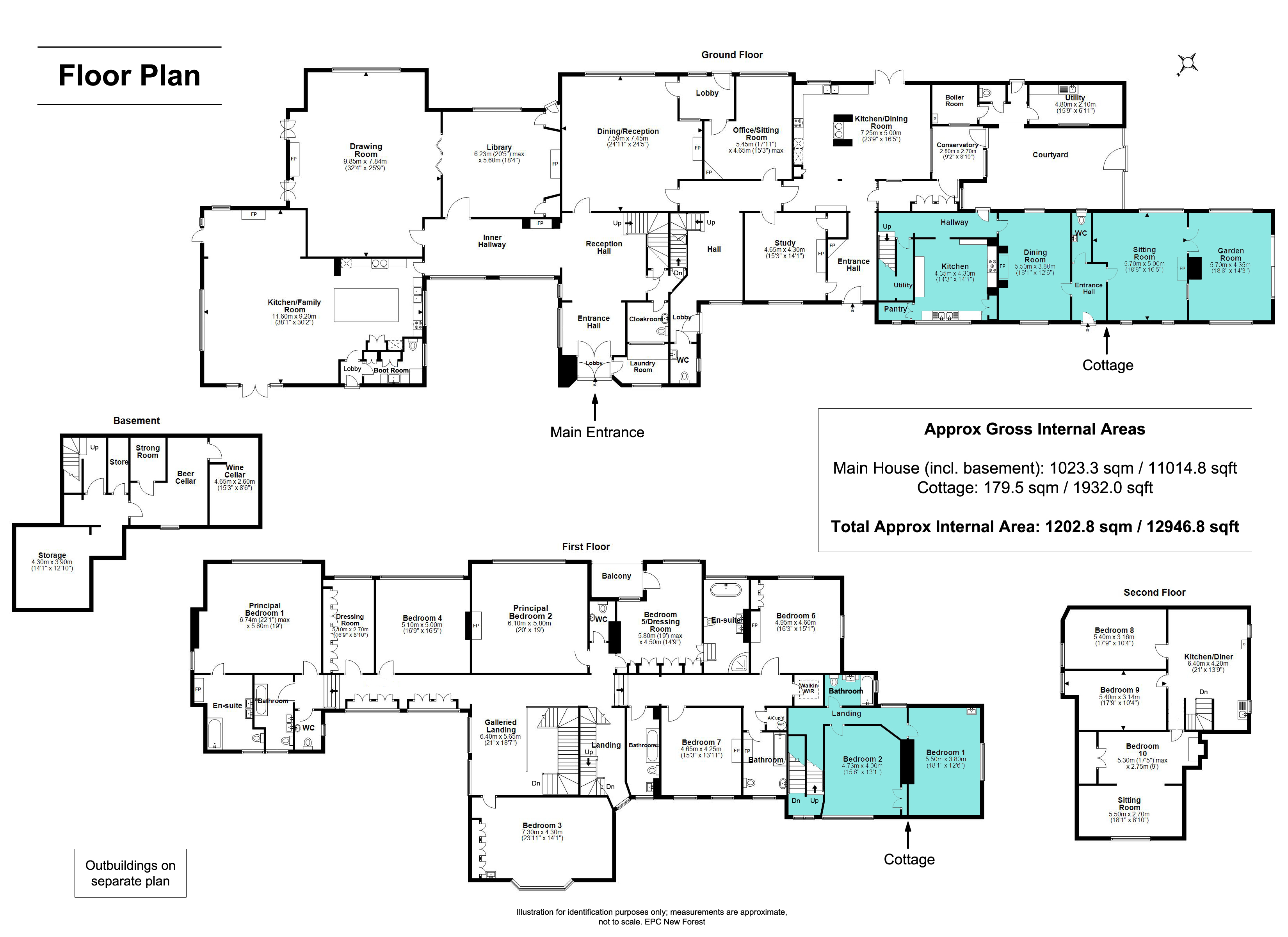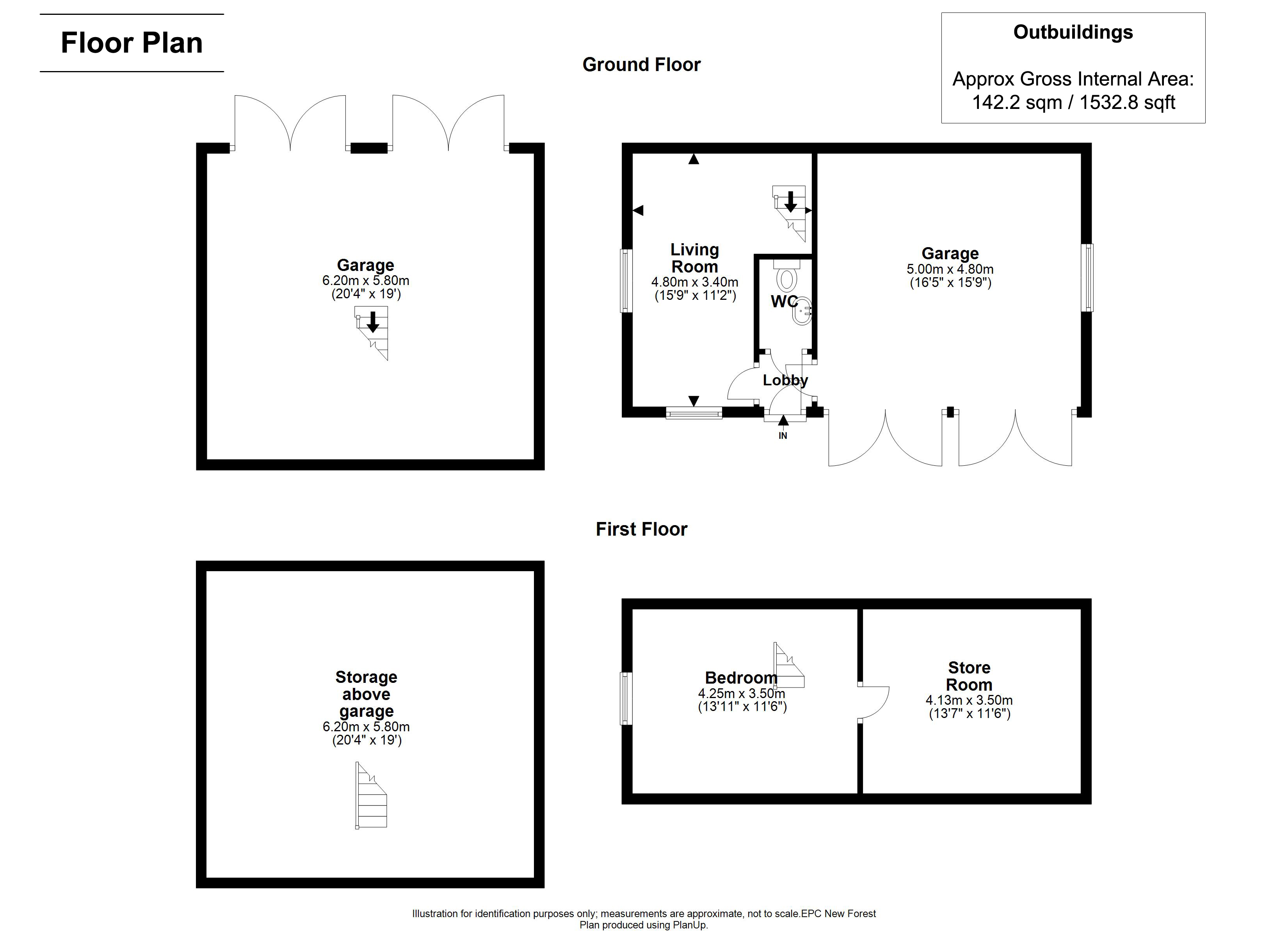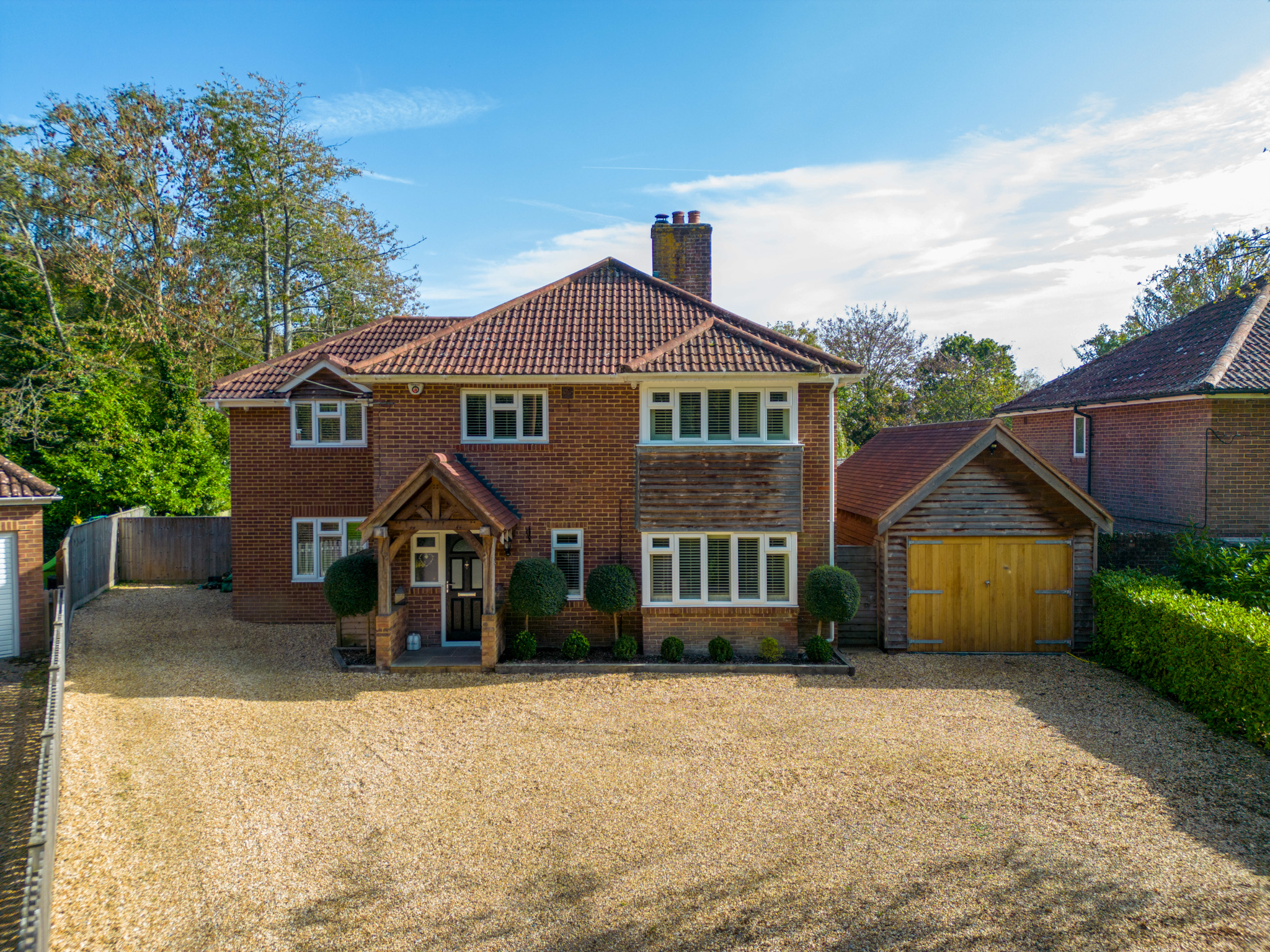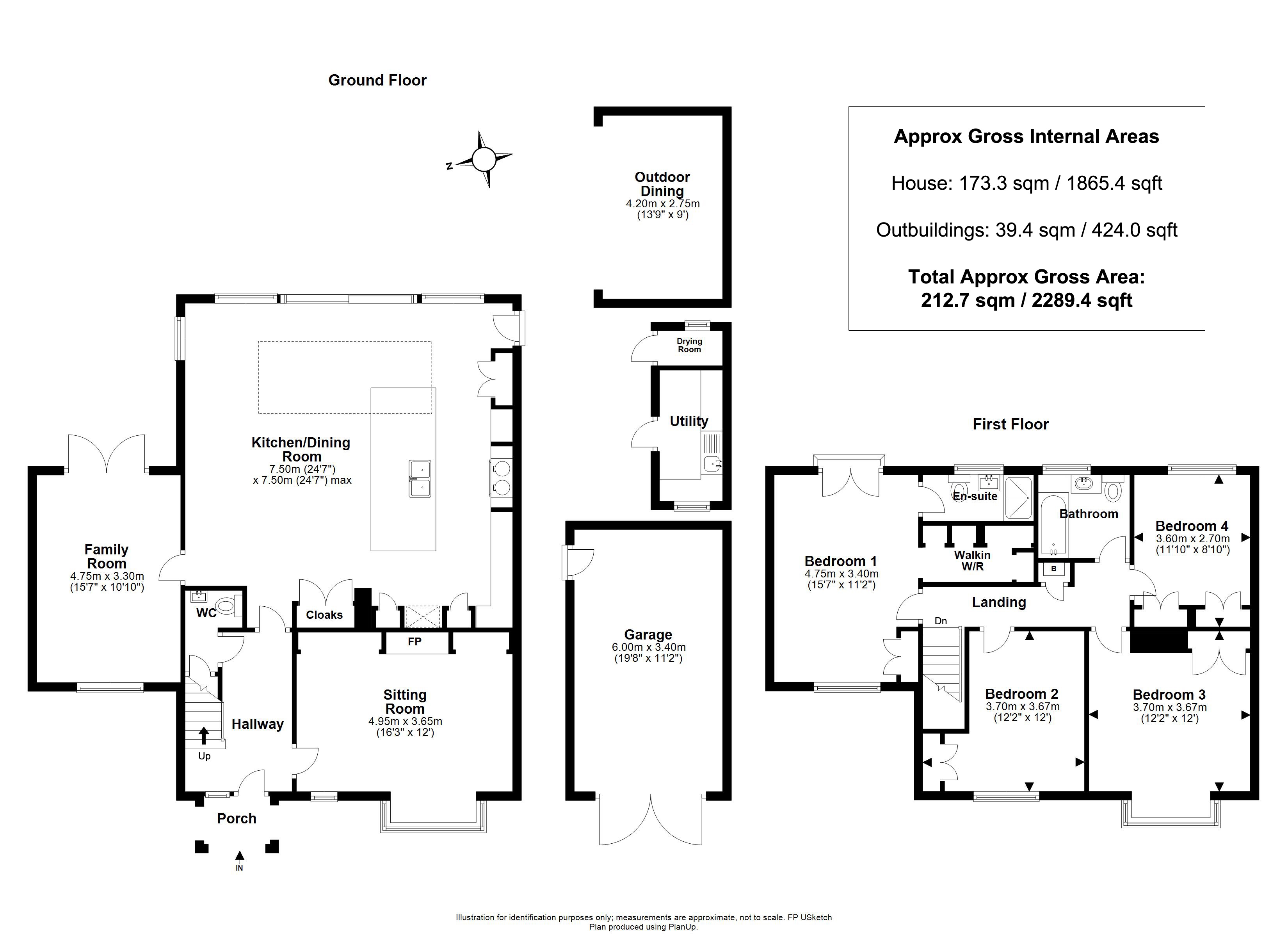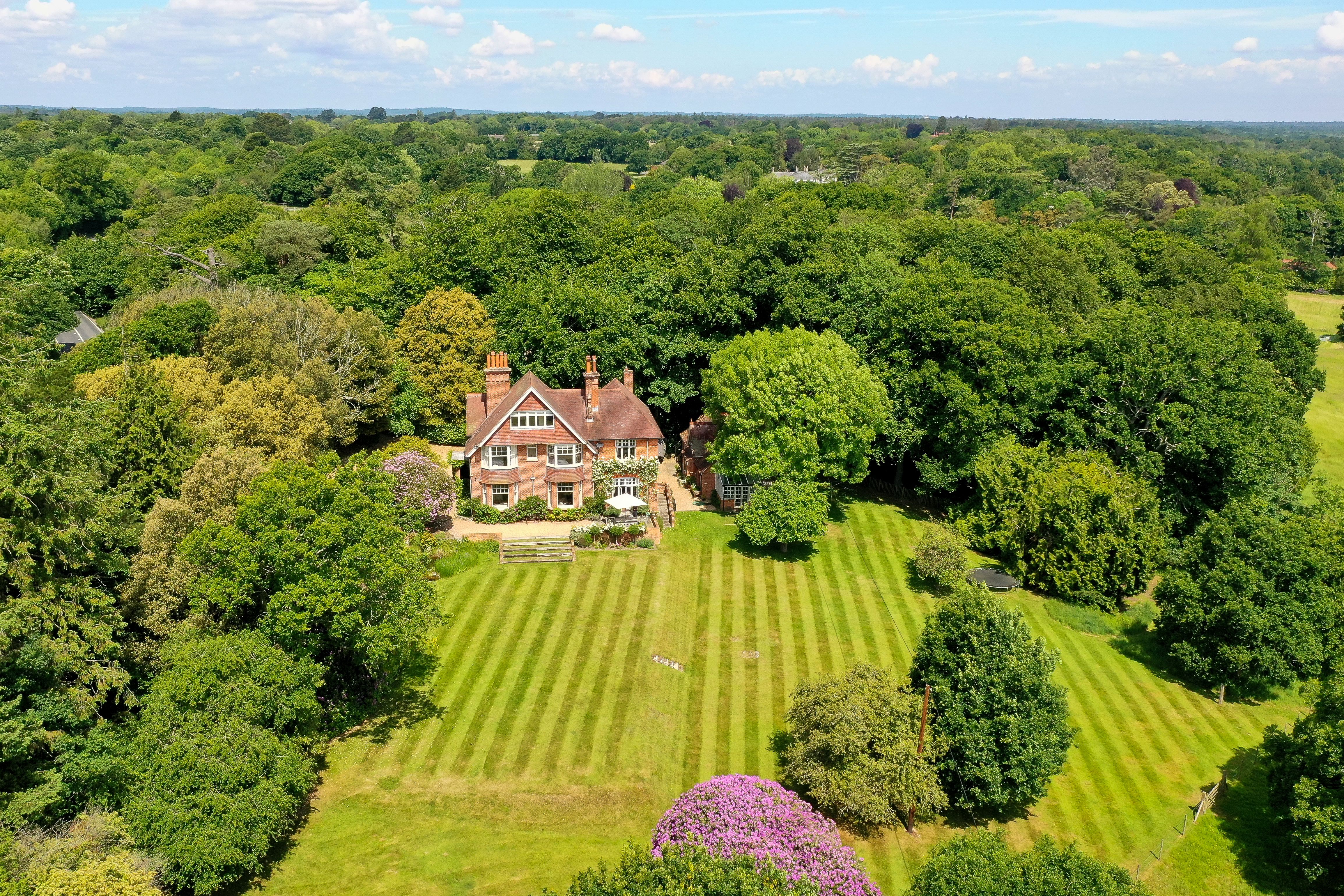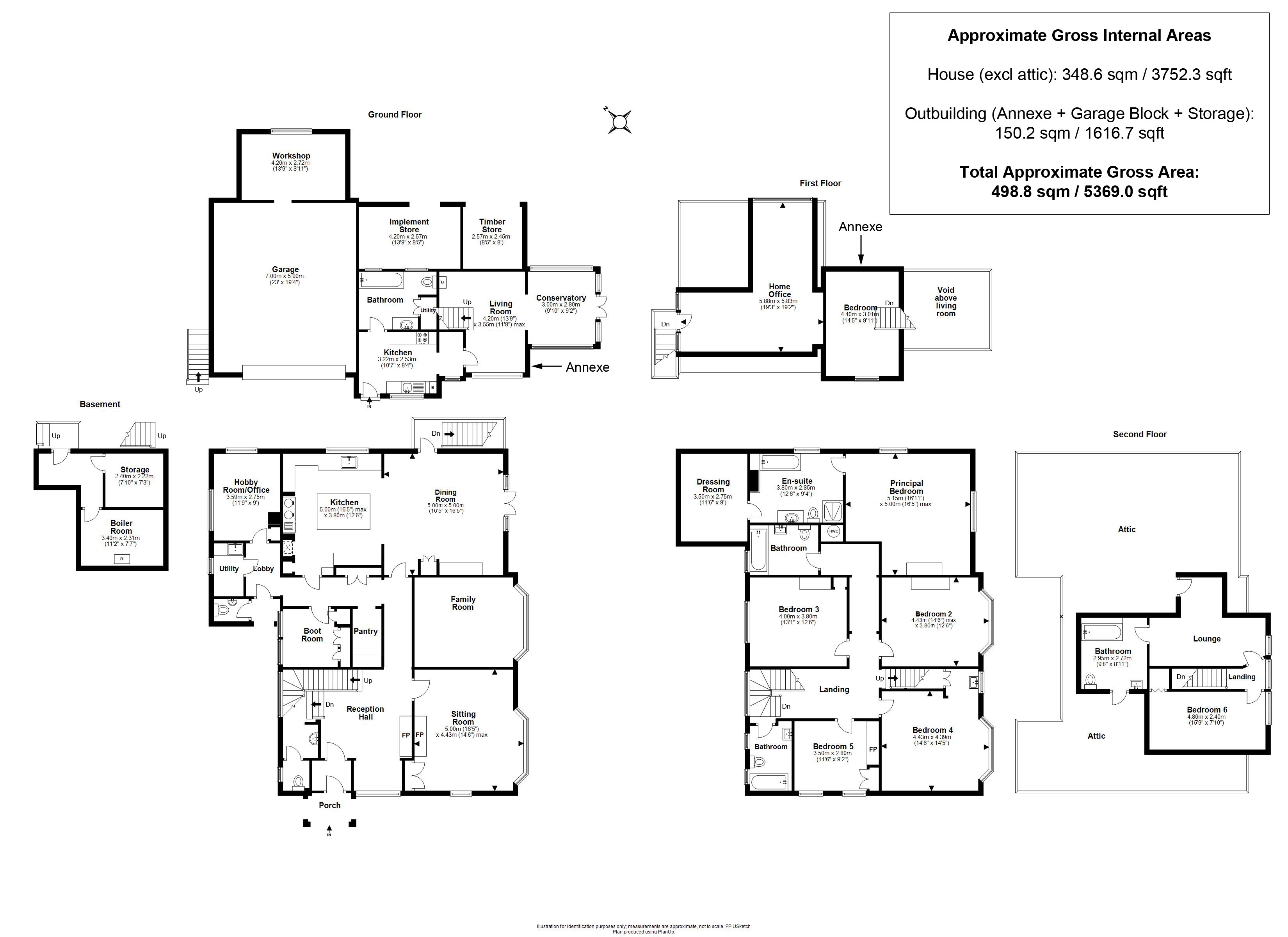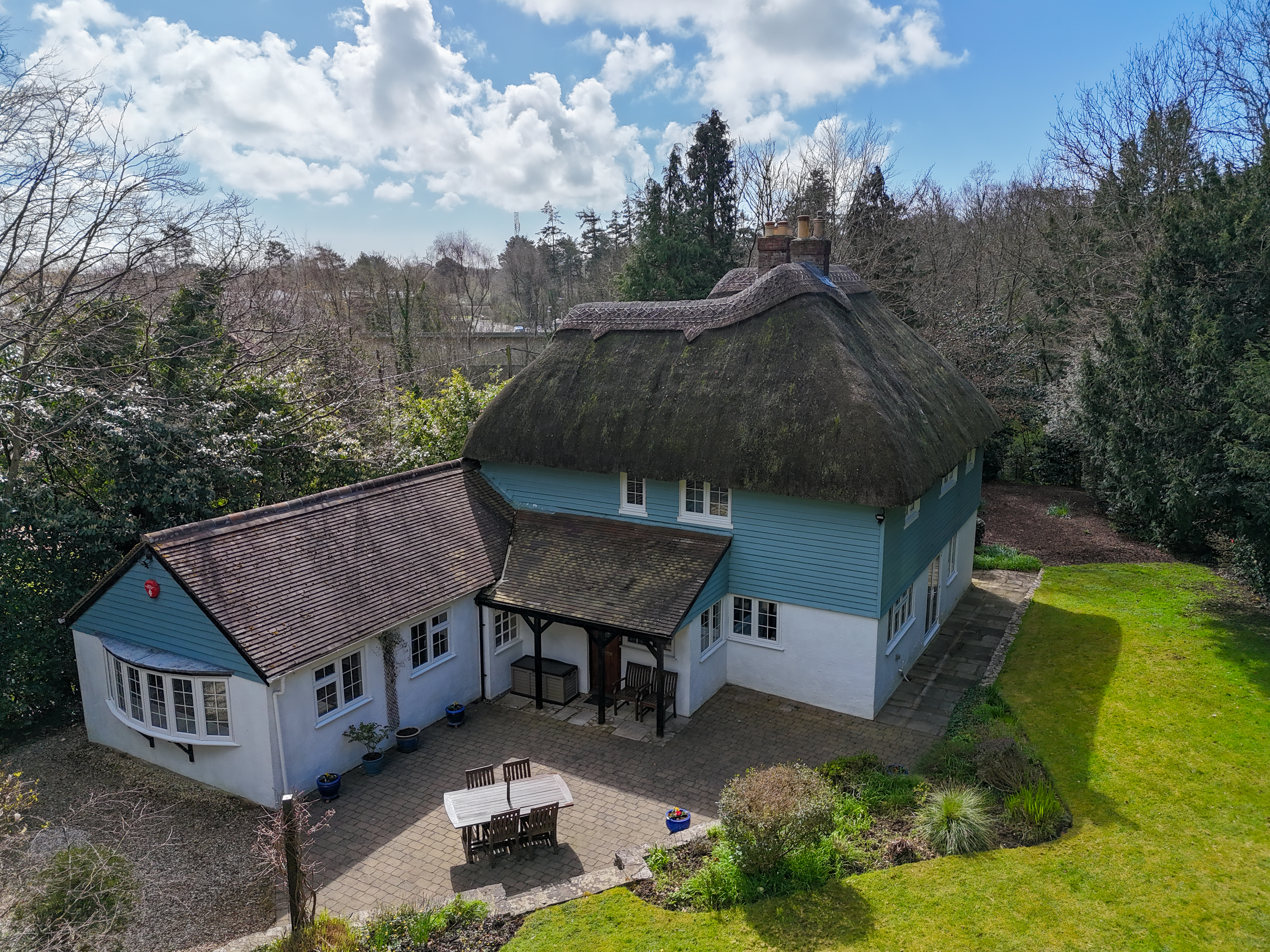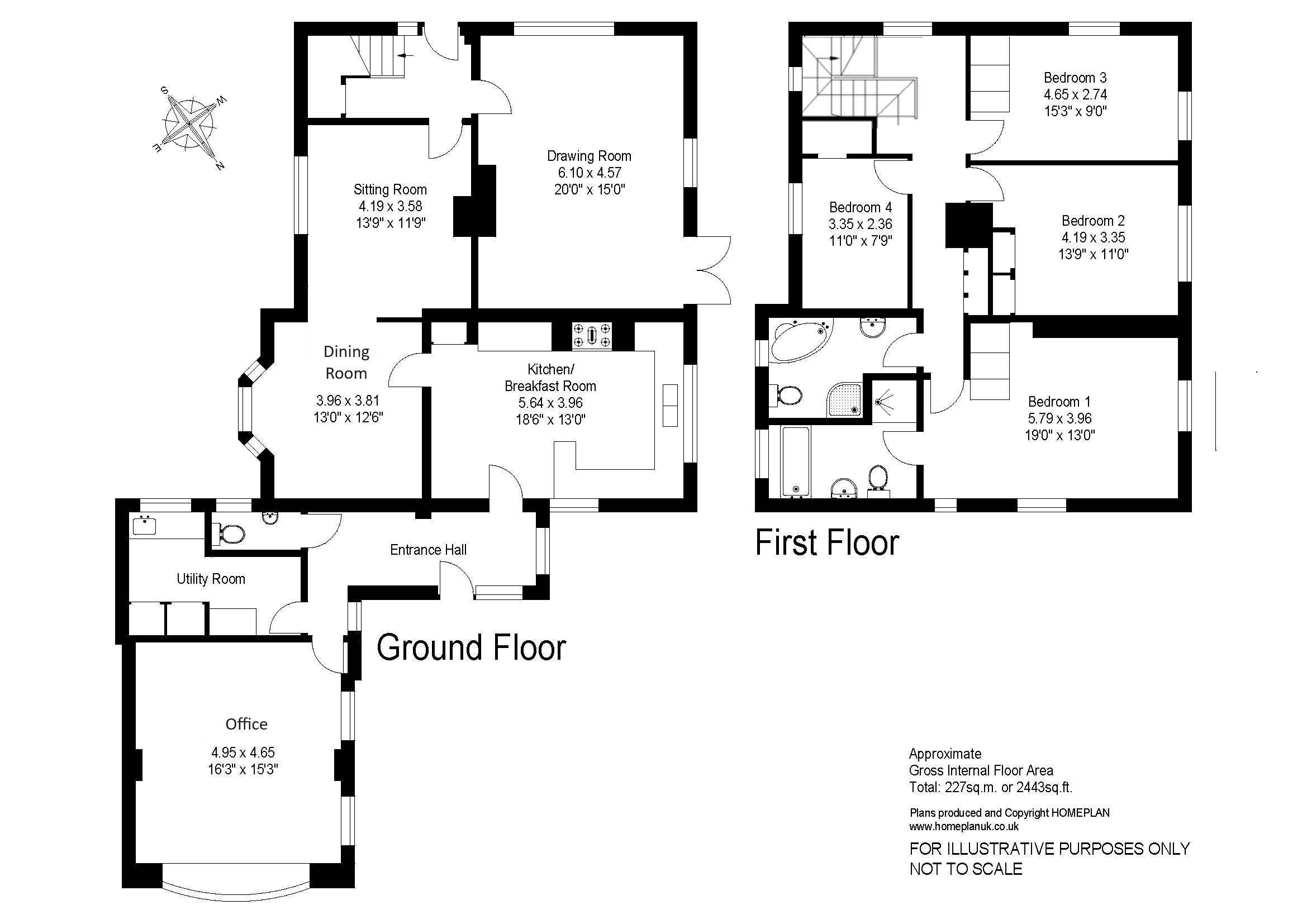-
Location

-
Description

Boldre Grange is reached down a long, private carriage drive that runs through mixed woodland before turning a corner to reveal a stunning view of the house, set among trees, including copper beeches, and beyond a lawn that is a drift of daffodils, bluebells and primulas in spring. A broad circular gravelled driveway sweeps round in front of the house, and provides extensive parking. To one side, a driveway leads to a separate brick built double garage with office, two bedrooms and wet room. In addition, gates on either side of the property provide access to the extensive grounds, approaching 22 acres and surrounding the house. The grounds feature the original formal Victorian gardens. These include a raised enclosed terrace garden with pond, magnificent yew walk, orchard, south-facing terrace running the length of the house, sweeping lawns with specimen trees, such as twisted willow and magnolia grandiflora, pergola, and ha-ha. Beyond the ha-ha are fields, extensive mixed woodland, and a viewing platform among the Scot pines. From these grounds, the charming aspect of Boldre Grange’s garden elevation can be fully appreciated. Of particular note is the security of the extensive rural views, across Boldre Grange’s own landscape of field and woodland to a far tree line to the south of the property.
This exceptional country house sits in a very private and tranquil parkland and country setting, yet Brockenhurst mainline station (direct service to London Waterloo in one hour and 40 minutes) is five minutes’ drive to the north, and the amenities of the Georgian market town of Lymington, a renowned sailing resort, is a short drive to the south.
Boldre Grange was built in 1872 for local landowner John Lane Shrubb to a design by eminent architect Richard Norman Shaw RA. Shaw is a significant figure due to his role in the English Domestic Revival Movement, helping to shape the direction of the 1890s Arts & Crafts Movement. His picturesque country house designs, including Boldre Grange, derive from his study of the English manorial style of the 16th and 17th centuries and are marked by a respect for the nature and character of differing building materials. Boldre Grange’s design encompasses many elements that became the Arts & Crafts Movement’s key features – namely asymmetrical composition, traditional construction, variety of materials and quality craftmanship. Shaw’s architectural drawings for Boldre Grange are kept at the Royal Academy of Arts, London. Boldre Grange was also mentioned by the art historian Nikolaus Pevsner in his architectural guides. He described Boldre Grange as having ‘all the Shaw features – asymmetrical facades, timber-framed gables, some mullioned and transomed windows, high chimneys, brick laid in English bond.’ As Boldre Grange was built for the nephew of the then vicar of Boldre, it is worth noting that the pulpit in Boldre church was also designed by Shaw. Post-war the house was bought by two families and sympathetically divided with the ‘service’ rooms and main rooms behind the porch as one part, and the porch wing and rest of the main house as the other part, in addition to a cottage which was once the estate’s dairy. The current owners moved into the main section of the property 20 years ago. Over the years they took the opportunity to acquire both the porch wing and the cottage, refurbishing each with care following purchase, and reinstating Boldre Grange as one property. The cottage remains separate with its own entrance door, back door, gardens and garaging, and can be rented out as additional income. The main house offers great flexibility, as the accommodation can be lived in as one dwelling or arranged as two separate properties as required: for example to accommodate family, staff or provide further income. This flexibility of accommodation is supported by the property’s different sections each being heated by a separate gas central heating boiler.
Boldre Grange is an exceptional Grade II* listed country house with well-proportioned, light-filled rooms, high ceilings and many large mullioned windows. Original features include oak boards, parquet and flagstone flooring, stone fireplaces, exquisitely detailed panelled doors and architrave, elegant staircases, and exposed brickwork and beams in the original kitchen. Altogether accommodation is in excess of 10,000 sq ft. The grand entrance opens onto an equally impressive yet welcoming reception hall with stone fireplace with woodburning stove, and fine turning staircase to galleried landing. Doors off this reception hall lead to the principal reception rooms, as well as a guest cloakroom, cleverly hidden utility, and entrance via a stone staircase to the cellars which run under much of the house, with original silver vault, ‘beer cellar’ and wine bins. Reception rooms in the ‘porch’ wing include an airy and distinguished drawing room with stone fireplace and woodburning stove, two pairs of French windows opening onto a terrace, and large mullion windows with extensive south-facing views over the gardens. Doors between the Drawing Room and the Library (currently used as an office/study) can be folded back to create an excellent entertaining space. The adjoining Library (or office/study) features a further stone fireplace with woodburning stove and there is access through a lobby and original studded door to the gardens.
Of particular note is the original Billiard Room with barrel ceiling, a signature feature of the architect. This room has been cleverly adapted into an inviting open plan kitchen/dining/living room ideally suited to the expectations of the 21st century lifestyle. The room features oak boards and flagstone flooring with underfloor heating. The elegant Smallbone walnut kitchen cabinetry with quartz worktop includes an Aga re-enamelled in complementary shade of brown, central island, ceramic induction hob, dual-purpose oven, microwave oven, separate full height fridge and freezer, and wine cooler. Intelligent storage solutions include a larder cupboard, media drawer with inbuilt USB ports for charging mobiles, double sink with waste disposal, and hidden dishwasher and bin storage. There is room for a table that can comfortably seat 20, and to one side is a cosy sitting area around the stone fireplace and woodburning stove. The room is lit by a lantern window in the barrel roof and windows on every side, creating a bright, airy living and entertaining space. An integrated lighting system also controls spots, wall lights and uplighters subtly hidden within picture rails to create different light scenes and atmospheres throughout the day and evening. There are glazed doors onto the gardens as well as a lobby that leads to a boot room with sink, wc, boiler, and what is referred to as a ‘back’ door, which actually provides convenient access to the front of the property.
A further door off the main reception hall leads into the original Dining Room, a richly panelled room with parquet flooring, fireplace and open fire. This is used as a principal Drawing Room if the house is divided into two sections. From this room, one door leads through to a lobby with access to the gardens, while another opens onto the second reception hall with a further front door, original flooring, turning stone staircase and antique Italian heater. There are doors onto a sitting room or snug overlooking the gardens, as well as an office/study with bespoke fitted shelving and storage, stone fireplace and gas fire. This room was originally the Butler’s Parlour and still has access to the cellars via a wooden staircase under a trapdoor. This section of the property has a farmhouse country style kitchen which was originally the Servants’ Dining Hall. This characterful and sociable room features exposed original beams and brickwork, John Lewis cabinets in pale wood, and appliances including Aga, ceramic hob, oven, microwave, fridge/ freezer, wine cooler, dishwasher and double sink. There are French windows opening onto the terrace and a good-sized table with built-in bespoke bench seating. In addition, there is a utility/ boiler room, store room and small conservatory with brick floor overlooking a private west-facing courtyard. Outbuildings in the courtyard include a further utility and wc, while doors lead into both the cottage garden and the house’s gardens.
Upstairs, the galleried landing can be appreciated as another of Shaw’s signature features running the full length of the house. On the first floor there are two principal bedroom suites. Both feature barrel ceilings, fireplaces and large windows with wide, south-facing views across the gardens and grounds. One suite includes a bathroom with dual basins and fireplace, and an adjacent dressing room with bespoke built-in wardrobes, dressing table and chest of drawers. The other suite includes a delightful dressing room with its own south facing, sheltered balcony. Glazed doors lead to an en suite bathroom with oak boards, dual basin and freestanding bath tub positioned under the window for relaxing garden views. There are four further guest bedrooms, all very generously proportioned, two with sinks and fireplaces, as well as two family bathrooms, and extensive store cupboards. Long-distance glimpses of the Solent and the Isle of Wight through woodland are possible from the first floor, south-facing rooms and balcony. A further turning staircase leads up to a suite of rooms on the second floor: comprising three good-sized bedrooms opening off a central sitting area. One of the rooms, with built-in bespoke shelving and storage, is currently used as a home office.
The adjacent cottage is approached via a driveway that leads to a separate garage. The Cottage sits in its own private gardens and it is accessed by a separate front door onto an entrance hall, with kitchen, dining room, living room, garden room and cloakroom on the ground floor. On the first floor are two bedrooms and a family bathroom.
Living in Brockenhurst
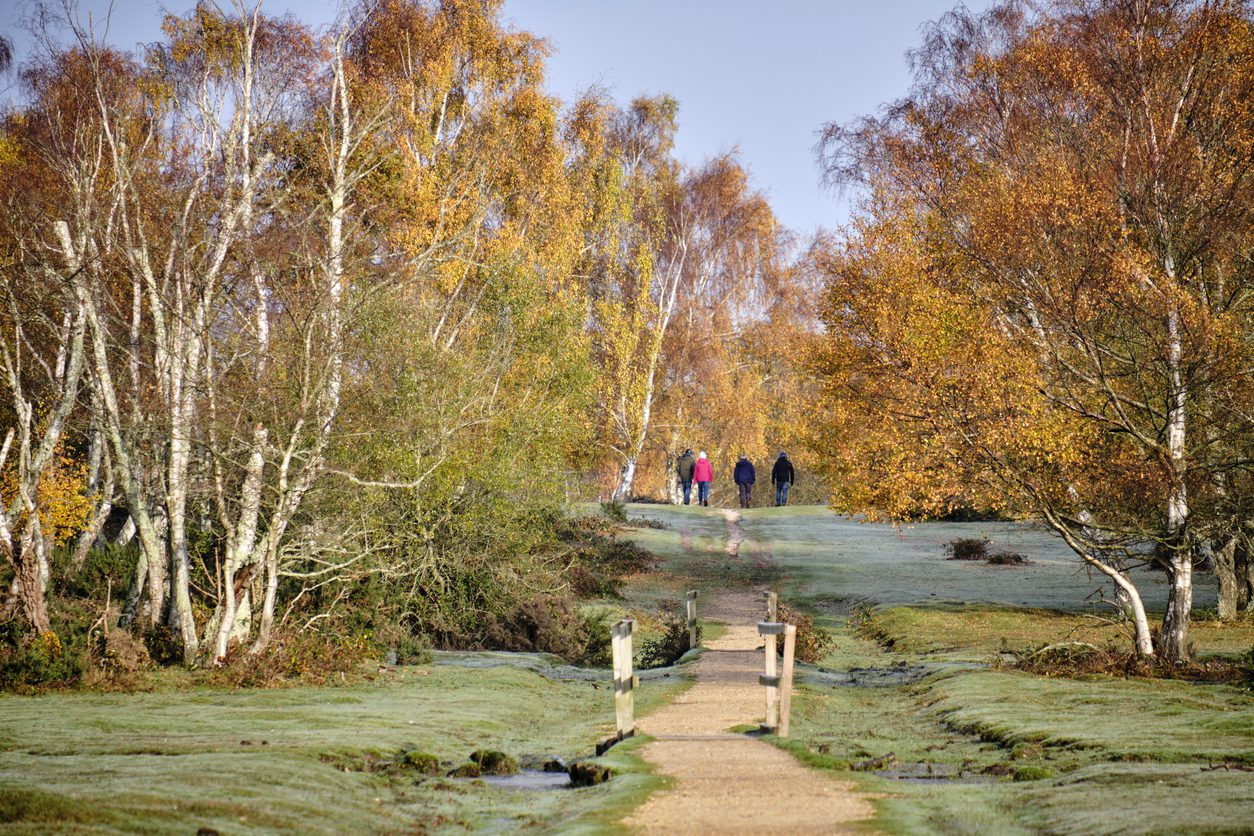
It is Brockenhurst’s mainline station (service into London Waterloo approximately 90 minutes) that turns the dream of a country idyll into reality for those working up in London and makes Brockenhurst village a property hot spot.
Brockenhurst is the largest village in the New Forest, a thriving and lively mix of community and cachet, quality and quirky with all the necessary essentials of a proper working village - butcher, bakery and greengrocer, full quota of cafes and tea houses, plus services such as doctor, dentist and post office. Work into the equation the unexpected and the glamorous: premier golf course, luxurious spa and top restaurants such as The Pig (the first in the group of hip country house hotels) and Cambium (fine dining at Careys Manor)... It all makes Brockenhurst a gem in the heart of the Forest.
Property ranges from Edwardian villas to thatched timber-framed cottages, and imaginative new builds to old Forest lodges. Many properties have access or views to open Forest and almost all are within walking distance of the station. Looking for an Estate Agent in Brockenhurst? Spencers are here to help.
£8,000,000 Offers in Excess of
Boldre, Lymington
-
Bedrooms: 10
-
Bathrooms: 5
-
Living Rooms: 6
Complete the form below to request a viewing of
Boldre, Lymington
Thank you.
A member of our Lymington team will be in
touch to confirm your viewing shortly
An outstanding Grade II* Listed Victorian country house, considered one of the most important houses in the New Forest, occupying a quiet and private position with commanding views over its own land extending to 22 acres. There is extensive accommodation with beautifully proportioned rooms that are sensibly arranged for modern living and also offering a separate but adjoining cottage and garaging.
Energy Performance Rating: Boldre Grange - Not applicable as the property is Grade II* Listed. Boldre Cottage - E.


